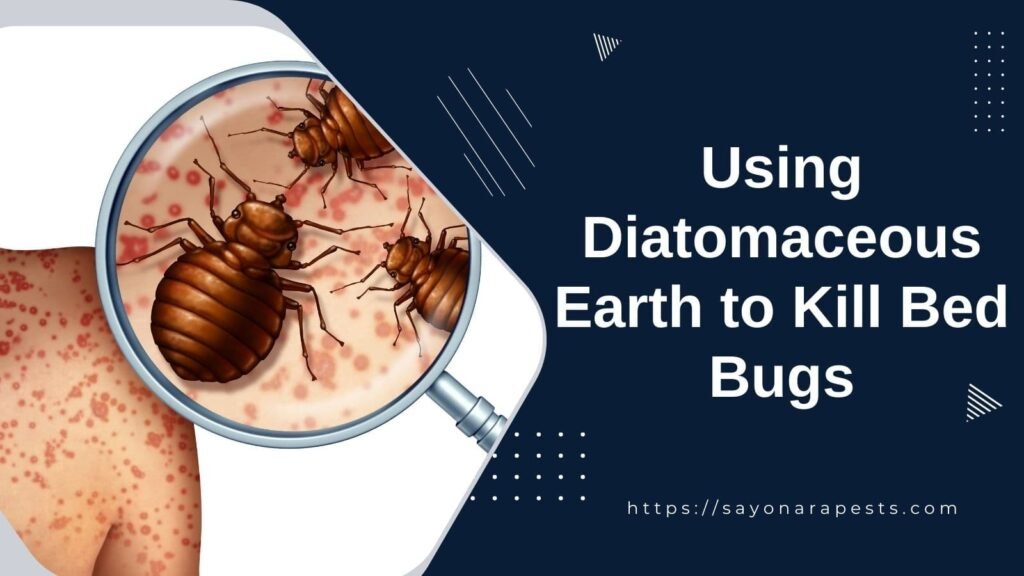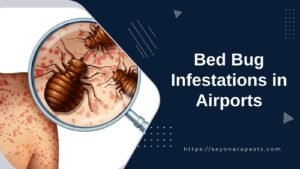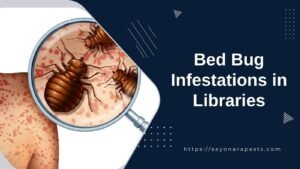Understanding Bed Bug Infestations
Dealing with bed bugs can feel like a never-ending nightmare for homeowners, hoteliers, and renters. These tiny pests are stubborn and require a well-thought-out plan to get rid of them for good.
What Affects Treatment Success?
Getting rid of bed bugs isn’t a one-size-fits-all deal. According to the Environmental Protection Agency (EPA), it can take anywhere from weeks to months, depending on a few key factors:
- How many bed bugs you have: More bugs mean more work.
- Where they’re hiding: Clutter and hard-to-reach spots give them more places to hide.
- Neighbors: In apartments or hotels, bed bugs can move between units, making it harder to get rid of them.
- Team effort: Everyone in the building needs to pitch in to keep them from coming back.
Understanding these points is crucial. Check out resources like ways to kill bed bugs and professional bed bug treatment options for more tips on tackling these pests.
Why Preparation Matters
Getting ready for bed bug treatment is half the battle. Good prep work can make a huge difference in how effective your efforts are. Whether you’re going DIY or hiring pros, here’s what you need to do:
- Declutter: Less stuff means fewer places for bed bugs to hide.
- Mattress covers: Use encasements to keep bugs out of your mattress and box springs.
- Laundry: Wash and dry your bed linens and clothes on high heat.
- Vacuum: Regular vacuuming can help get rid of bed bugs and their eggs.
The EPA says these steps are essential no matter what treatment you choose. Also, knowing the myths and facts about bed bugs can help you set realistic expectations.
For more tips on preparing for treatment and keeping bed bugs away, check out articles on preventing bed bugs from spreading and stopping bed bugs when traveling. These guides can help you understand what attracts bed bugs to your home and how to keep them at bay.
Bed Bug Treatment Methods
Dealing with bed bugs is like playing a game of whack-a-mole. You need a mix of strategies to win. Whether you’re a homeowner, renter, or hotelier, there are several ways to tackle these pesky invaders.
Bed Bug Interceptor Traps
Interceptor traps are a popular, non-toxic way to keep an eye on and control bed bugs. These traps catch bed bugs as they try to climb up furniture legs to reach you while you sleep. You can buy commercial traps or make your own with stuff you probably have lying around. The EPA has some handy tips on both options.
These traps work by creating a barrier bed bugs can’t cross. They climb up the outer wall of the trap, fall into a smooth pit, and can’t get out. While this won’t get rid of bed bugs entirely, it can cut down on bites and help you see if you still have a problem. For more ways to tackle bed bugs, check out our comprehensive guide.
Retreatment Considerations
Bed bugs and their eggs are tough cookies. You might need to retreat your space after the first go. If you still see signs of bed bugs, it means some were missed or new ones have hatched. You might need to switch up your pesticides or methods since bed bugs can get used to certain chemicals. The EPA suggests mixing up your strategies.
When planning retreatments, follow the waiting periods and instructions for each product. This ensures safety and effectiveness. For more tips, check out our resources on effective bed bug extermination methods.
Professional Pest Management
Sometimes, DIY just doesn’t cut it. If the infestation is too big or you don’t want to deal with it yourself, hiring a professional might be your best bet. Pros have access to stronger treatments like heat treatments and more potent insecticides that you can’t get at the store.
Before hiring a pest control service, do your homework. Pick a reputable company that uses EPA-registered treatments and follows an integrated pest management approach. For more on this, read our article on professional bed bug treatment options.
Combining these methods with preventive measures, like preventing bed bugs when traveling and how to check for bed bugs in hotel rooms, can help keep your space bed bug-free. Remember, a multi-faceted approach is your best shot at getting rid of these stubborn pests.
Diatomaceous Earth for Bed Bug Control
Diatomaceous earth (DE) is a game-changer in the fight against bed bugs, offering a natural alternative to chemical pesticides. Let’s break down how it works, the forms you can get it in, and the health risks you need to watch out for.
How Diatomaceous Earth Works
DE has been a go-to for pest control since the ’60s. It works against bed bugs by sticking to their exoskeletons and tearing up their waxy layer. This causes them to dry out and die. The sharp edges of DE particles create tiny cuts on bed bugs, messing with their hydration and leading to their death.
But here’s the kicker: some studies suggest bed bugs might be getting used to DE, showing signs of resistance.
So, you might need to mix DE with other bed bug treatments for the best results.
Types of Diatomaceous Earth
You can find DE in a few different forms, each suited for different uses. It’s usually sold as a fine powder that you can sprinkle in places where bed bugs hang out. Always go for “food-grade” DE, especially if you have kids or pets around.
Here’s a quick look at the types of DE you can buy:
| Form | Description |
|---|---|
| Pure Diatomaceous Earth | 100% DE, mostly amorphous silicon dioxide. |
| DE with Attractants | DE mixed with stuff to lure bed bugs. |
| DE Sprays | DE in a liquid form for easy application. |
Always follow the instructions on the package when using DE to make sure you’re using it safely and effectively.
Health Risks of Diatomaceous Earth
While DE is great for killing bed bugs, it’s not without its risks. Most DE products are made of amorphous silicon dioxide, which can be harmful if you breathe it in. Inhaling DE can lead to respiratory issues like silicosis and lung cancer.
DE can also irritate your skin and nasal passages. Breathing in too much can cause coughing, shortness of breath, and in severe cases, serious lung problems.
So, handle DE carefully and follow safety guidelines. Check out our guide on safe application of diatomaceous earth for more tips.
In a nutshell, diatomaceous earth can be a powerful weapon against bed bugs, but you need to use it wisely. Handle it with care, be aware of potential resistance, and consider combining it with other treatment methods to get the best results in your battle against these pesky critters.
How to Safely Use Diatomaceous Earth for Bed Bugs
Diatomaceous Earth (DE) is a handy tool for tackling bed bug problems, but using it safely and effectively is key. Here’s how to handle and apply DE to get rid of bed bugs without any hiccups.
Watch Out for Inhalation Risks
When using DE, you gotta be careful. Breathing in DE can irritate your nose and lungs, causing coughing and shortness of breath. Long-term exposure might even lead to serious lung issues like silicosis, which is no joke.
Stick to food-grade or pet-grade DE, as pool-grade DE is more dangerous if inhaled. Always wear a dust mask when spreading DE to keep your lungs safe. Check out the Material Safety Data Sheet (MSDS) from your supplier for more safety tips, and steer clear of pool-grade DE.
How to Apply DE Like a Pro
Applying DE isn’t rocket science, but it does require some finesse. Lightly dust the powder in spots where bed bugs hang out, like bed frames, baseboards, and mattress edges. A thin layer works best; too much, and the bugs will just avoid it.
Use a duster or a fine sieve to spread the DE evenly. Make sure to get into cracks and crevices where bed bugs love to hide. Avoid piling up the DE, as this can make it less effective.
Tips for Getting the Most Out of DE
DE needs to stay dry to work its magic. Moisture can mess it up, so avoid using it in damp areas. Be patient—DE works slowly, and it might take days or even weeks to see a difference.
Once you’ve applied DE, try not to disturb the area too much. If you need to clean, reapply the DE to keep it working. Remember, DE is just one part of your bed bug battle plan. Use it along with other methods like heat treatment, steam, and professional pest control for the best results.
By following these tips and combining DE with other bed bug-killing methods, you’ll be well on your way to a bug-free home.
Boosting Diatomaceous Earth Power
Setting Up a DE Barrier
One of the smartest ways to use diatomaceous earth (DE) against bed bugs is by creating a barrier. Sprinkle DE in spots where bed bugs love to roam, like electrical outlets, wall cracks, and where the carpet meets the wall. For wall-to-wall carpeting, work the DE into the edges.
This creates a no-go zone for bed bugs around your bed. While you might still get a few bites at first, this barrier can cut down on bites over time.
Teaming Up with Other Treatments
DE is great, but it works best when you use it with other bed bug-killing methods. Think of it as part of a tag team. Use heat treatments, steam, vacuuming, and targeted insecticides to hit bed bugs from all angles.
This combo can tackle bed bugs at every stage of their life and in all their hiding spots, giving you a better shot at wiping them out for good.
Buying and Using DE
When you buy DE, make sure it’s food-grade, especially if you have kids or pets around. Follow the instructions on the label, and wear a dust mask and gloves to avoid irritation or breathing it in.
DE takes time to work, so be patient. Keep an eye on the situation and reapply as needed.
For more tips on DIY bed bug control, including how to use DE safely and other natural remedies, check out our resources. They’re packed with info to help you keep your home bed bug-free.
Diatomaceous Earth vs. Bed Bugs
Diatomaceous earth (DE) is gaining traction as a go-to weapon against bed bugs. It’s a natural, non-toxic way to tackle these pesky invaders, making it a hit with folks who’d rather skip the chemicals.
How It Works
DE takes out bed bugs by drying them out. It’s made from the fossilized remains of tiny water creatures called diatoms. Under a microscope, DE looks like it has sharp, gritty edges.
When bed bugs crawl over it, these edges slice through their waxy outer layer. Without this layer, the bugs lose moisture and eventually dry up and die. This method is mechanical, not chemical, so bed bugs can’t build up resistance.
How Long It Takes
The time it takes for DE to kill bed bugs depends on a few things: how bad the infestation is, how well you apply the DE, and the bugs’ life stage.
Usually, it takes about 7 to 17 days for bed bugs to die after touching DE. The time varies because of their molting cycles, how much DE they encounter, and how long they’re exposed to it. Bed bug eggs aren’t affected until they hatch, which can add another 6 to 10 days.
Tips for Best Results
While DE can be effective, it’s best used as part of a bigger plan. Combining it with other methods like heat treatments, steam, or professional help can boost your chances of getting rid of bed bugs for good.
If you decide to use DE, make sure you apply it correctly.
Dust it lightly in places where bed bugs are likely to crawl. Be careful not to inhale it, and keep up with regular treatments and checks since DE can take weeks to work. Pairing DE with other strategies like vacuuming and insecticides can make it even more effective.
By mixing DE with other bed bug-killing methods, you can better protect your home or business from these stubborn pests.
Stay informed about how to stop bed bugs from spreading and bust myths about bed bugs to keep your space bed bug-free.




